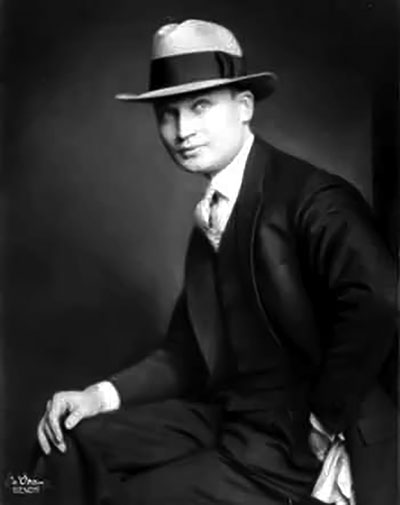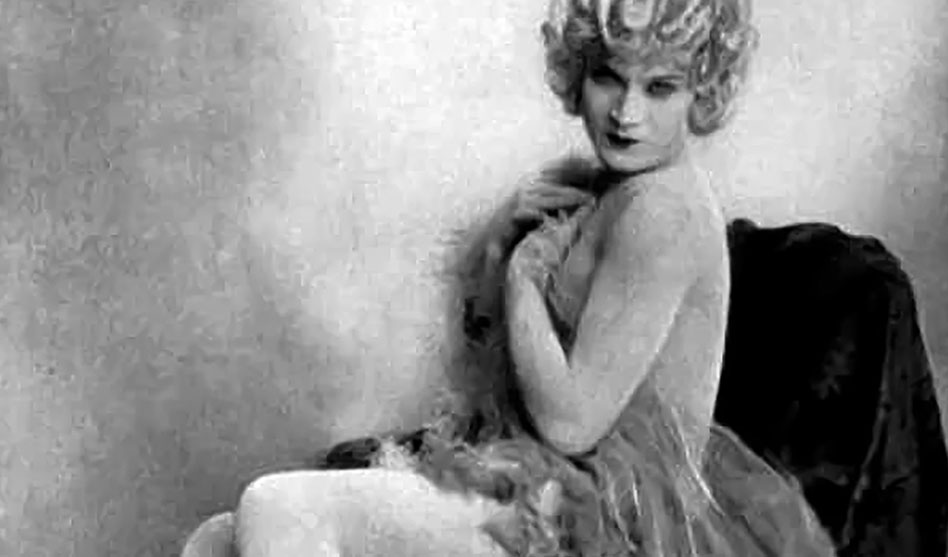Vander Clyde as Barbette. (Photo via CircusesAndSideshows.com)
Vander Clyde was the daring young queen on the flying trapeze
BARTEE HAILE | Special Contributor
SPECIAL TO THE MEXIA NEWS
EDITOR’S NOTE: This column is reprinted from The Mexia News, courtesy of the author.
The unique and fascinating life of Vander Clyde ended where it started, his birthplace of Round Rock, when the celebrated star of the trapeze and high wire died by his own hand on Aug. 5, 1973.
“The first time my mother took me to the circus in Austin, I knew I would be a performer,” Clyde once said of the big-top experience that gave him his calling. “From then on, I’d work in the fields during the cotton-picking season to earn money in order to go to the circus as often as possible.”
Hour after hour, the youngster practiced “walking” an imaginary high-wire — his mother’s clothesline in the backyard. Confident he was ready for the real thing, he answered an ad placed by the surviving half of an acrobatic duet called the “Alfaretta Sisters.”

Vander Clyde went from Round Rock around the world and back again.(Photo courtesy CircusesAndSideshows.com)
For a 14-year-old boy, Clyde was exceptionally well-developed and coordinated. He aced the audition in San Antonio and agreed to fill the vacancy left by a recent death in the family despite his employer’s unusual condition: “She told me that women’s clothes always make a wire act more impressive and asked me if I’d mind dressing as a girl.
“I didn’t, and that’s how it started.”
After a successful apprenticeship as an Alfaretta, Clyde moved on to “Erford’s Whirling Sensation.” In this one-trick-pony of an act, he and two other performers hung by their teeth from a spinning contraption.
In 1919 Clyde soloed under the stage name “Barbette.” “I do wire walking and perform on the trapeze and flying rings,” the smooth-talking self-promoter never tired of explaining. “These feats are merely incidental to the surprise which is sprung at the end of the act.”
Clyde’s convincing female impersonation, complete with expensive gowns and feathered headgear, had the audience believing he was indeed a woman. Then he suddenly shattered the illusion by removing his wig and striking bodybuilder poses that showed off his muscular and undeniably masculine physique.
Four years on the vaudeville circuit led to a European tour managed by the William Morris Agency. “Barbette” was a sensation wherever “she” went, but it was in Paris that Clyde’s alter-ego attracted a devoted cult following.
The French frenzy was due in large part to the rave reviews of artist Jean Cocteau, who in a 1923 letter to a friend in Belgium wrote, “Next week in Brussels, you’ll see a music-hall act called ‘Barbette’ that has been keeping me enthralled for a fortnight. The young American who does this wire and trapeze act is a great actor, an angel, and he has become a friend to all of us.”
However, things did not go quite as well for Clyde in London. After he was supposedly caught in a “compromising position” with another man, an allegation never proved, his contract was cancelled, and he was banned for life from England.
Clyde weathered the scandal with no serious damage to this career. He continued the “Barbette” masquerade in Europe and the United States, including regular appearances in the major cities of his native state of Texas.
Under the heading “Thrilling Acrobat,” a reporter for the Dallas Morning News gushed in June 1927, “Barbette, who has rightly been termed ‘a sensational European novelty,’ opens with a gorgeous splash of color, emanating principally from the beautiful gown employed. For the first few moments it appears as though one were going to witness a style show, but once Barbette gets into action, all else is forgotten.”
At the peak of his popularity, a fall, pneumonia, polio or a bizarre combination of the three brought about Clyde’s unexpected retirement in 1938. He needed surgery and a year-and-a-half of rehabilitation just to walk again, but there was not much the doctors could do for the constant pain.
On the bright side, Clyde’s extraordinary talent did not go to waste. He worked as artistic director for Ringling Brothers and other circuses and choreographed several all-women trapeze acts.
As a motion picture consultant, he supervised the circus scenes for Till the Clouds Roll By (1946) and The Big Circus (1959) and taught Jack Lemmon and Tony Curtis the finer points of female impersonation for the 1959 comedy Some Like It Hot.
Orson Welles tapped Clyde’s creative genius for the circus scenes in his Broadway musical Around the World. Even Disney was willing to overlook his risqué past in exchange for the aerial ballet in Disney on Parade in the late 1960s.
Following a tour of Australia with the Disney road show, Vander Clyde wandered back to Round Rock — not in a nostalgic return to his roots but to live with his sister. After more than three decades of intolerable pain, he took a fatal overdose of prescription pills in the summer of 1973.

